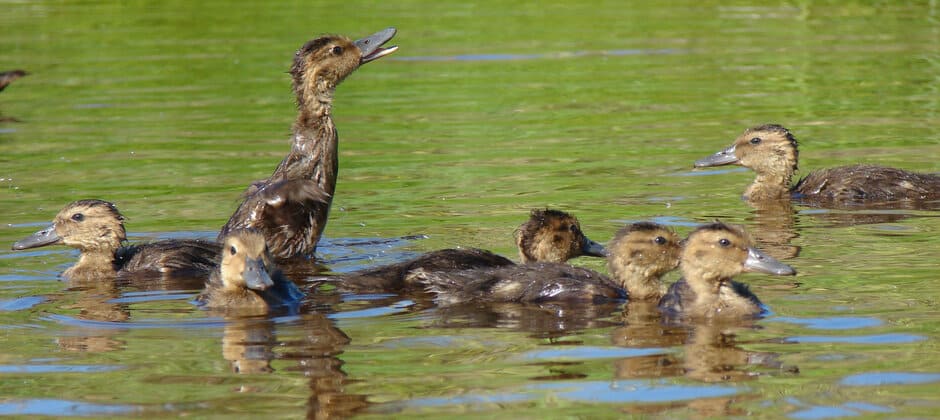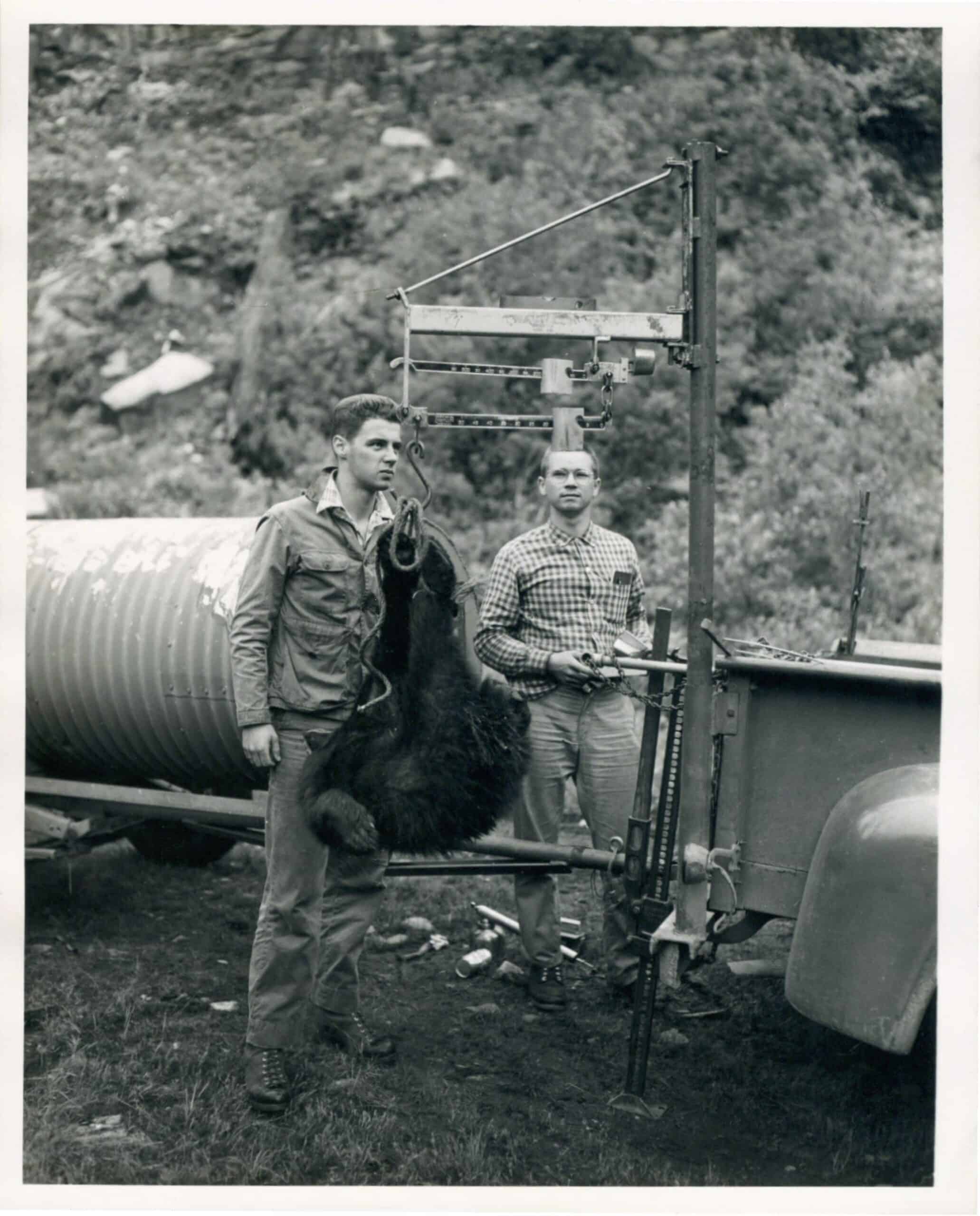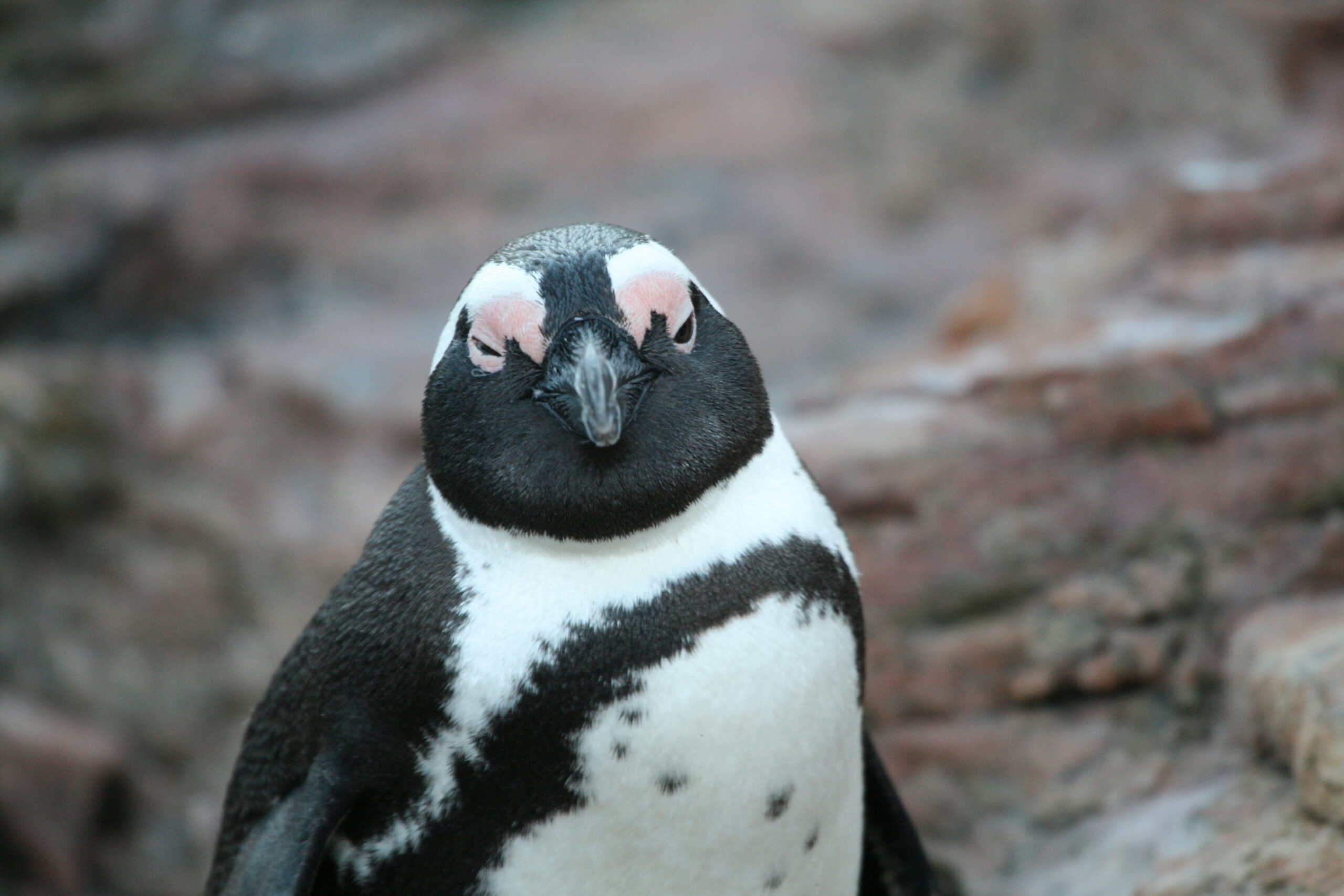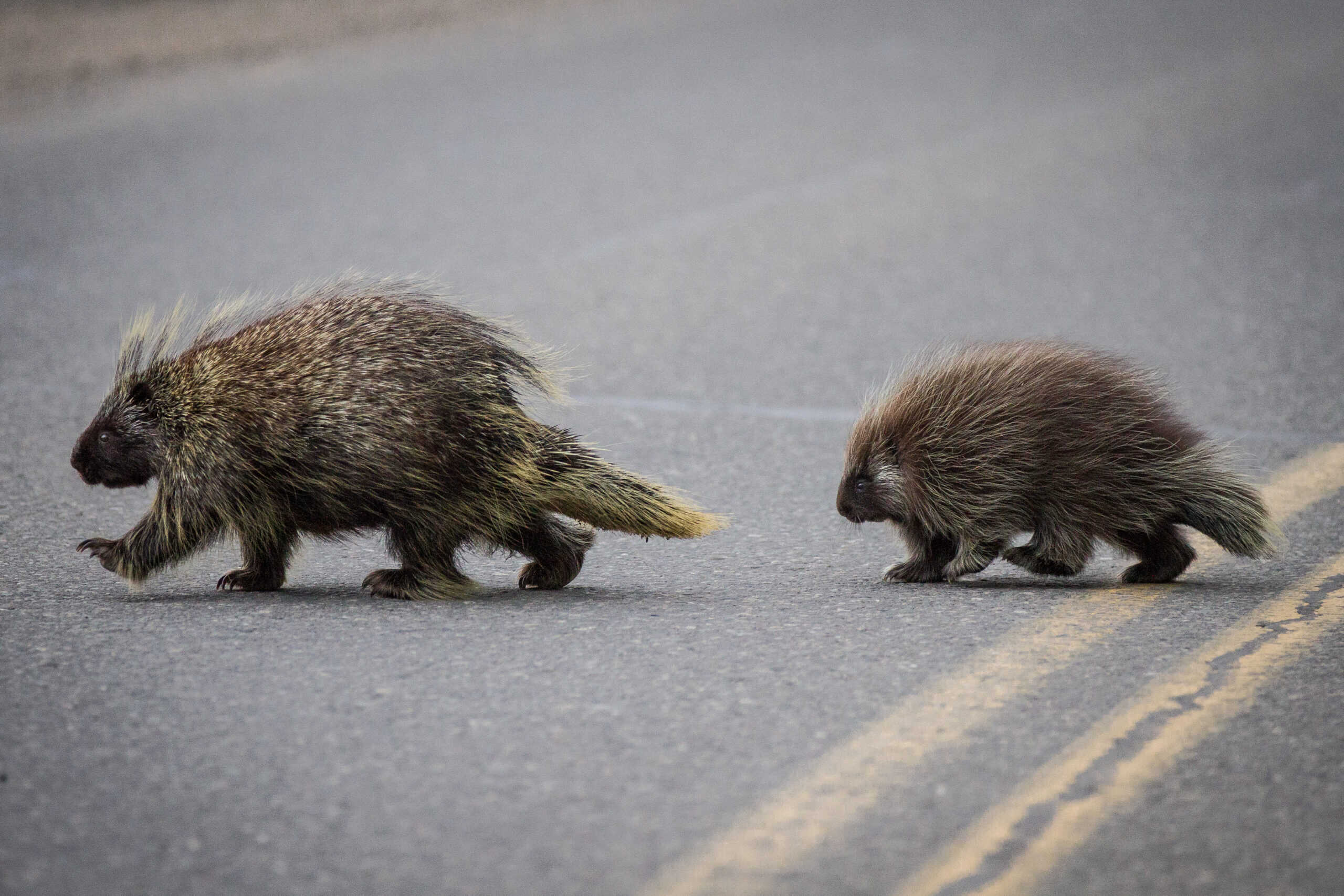Share this article
Dogs stymie spread of avian botulism in Hawaii
Avian botulism first hit Laysan ducks in Midway Atoll in 2008. The disease, essentially a form of food poisoning, threatened to derail the recovery work of one of the most endangered ducks in the U.S. Pacific. It killed about a third of the population — or 190 birds — in two months at the Midway Atoll National Wildlife Refuge, about four years after managers successfully reintroduced the first batch of the waterfowl there. Only about 800-1,000 Laysan ducks live in the wild at this point.
“To have that many die in a short period of time is really alarming,” said Michelle Reynolds, who was a wildlife biologist with the U.S. Geological Survey while studying the species.
Reynolds was working with the conservation and ecology of these and other ducks, but quickly turned her attention to dealing with the deadly bacterial disease outbreak. She helped set up a field hospital with U.S. Fish and Wildlife managers to help Laysan ducks (Anas laysanensis) that weren’t too far gone to be saved with fluids, rest and anti-toxin injections.
“Every year since, there have been chronic avian botulism outbreaks,” she said.
In 2011, the disease began to appear chronically at another wildlife refuge on Kauai, killing endangered Hawaiian ducks (Anas wyvilliana), also known as the koloa maoli in Hawaiian.
As many as 250 endangered waterbirds were dying on Kauai every year, so much so that Reynolds and her colleagues couldn’t keep up with intensive searching and carcass collection. Dead birds that had the disease could also transfer the toxin to other ducks. Ducks eat insects and other arthropods, including those that feed on duck carcasses. The longer a dead duck stays on the landscape, the bigger problem it can be for other nearby ducks as more and more insects that can transfer the bacteria’s toxin are attracted to the carcass.
“That one dead duck could cause 100 more dead ducks,” Reynolds said.
Volunteers scoured Hanalei National Wildlife Refuge in search for carcasses during outbreaks, but it was a lot of work.
“The refuge was overwhelmed with searching for these carcasses,” Reynold said. She and Hanalei refuge biologist Kim Uyehara started to wonder if trained dogs might do a better job or make the search easier.
They contacted a dog trainer who had worked with a similar project looking for botulism-affected carcasses in Taiwan, then submitted a proposal to conduct similar work in Hawaii.
In 2017-2018, and her colleagues got the pilot project off the ground. They hoped the dogs might be able to speed up the carcass detection and removal and reduce the impact of an outbreak.
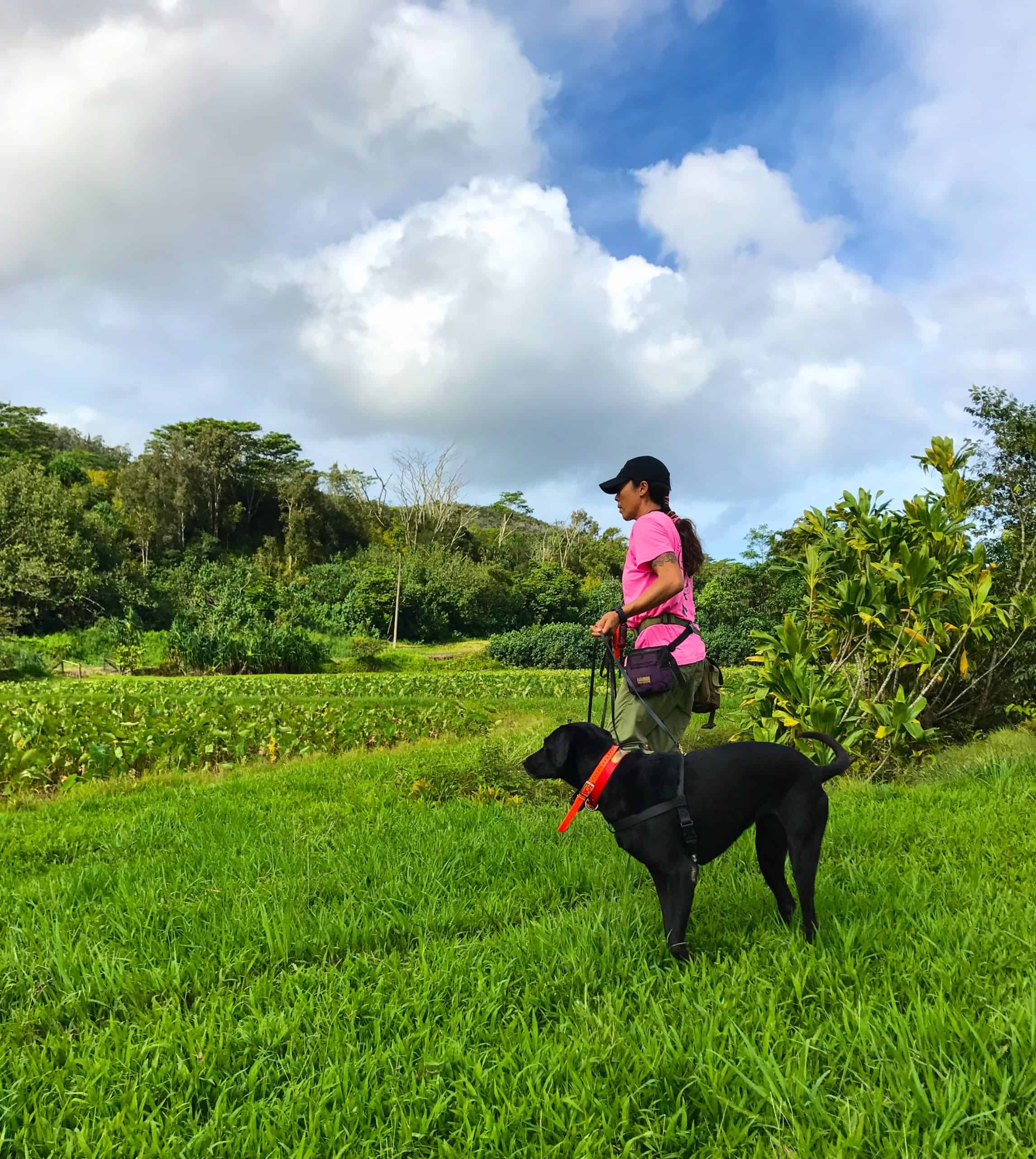
Dog trainer Kyoko Johnson with a specially trained scent-detecting dog at the Hanalei National Wildlife Refuge in Hawaii
Credit: Michelle Reynolds, USGS. Public domain
First, it took a lot of training. Wildlife managers needed to ensure that dogs wouldn’t harass the different birds in the refuge. Hanalei includes areas with traditional Hawaiian taro agriculture that provides habitat for the ducks and other water birds of conservation concern like Hawaiian stilts (Himantopus mexicanus knudseni) and federally endangered Hawaiian moorhens (Gallinula chloropus sandvicensis).
“To bring dogs into that sort of environment required a lot of training and precaution,” Reynolds said, adding that they needed to get the Hawaiian farmer’s support for the project, since the dogs might need to enter the fields of the taro they grew in the area. They wanted to use search methods that also reduced risk of damage to the crops.
To address these concerns, dog trainer Kyoko Johnson taught the dogs to alert the team when a potential carcass was detected from the perimeter of the field. “They would sit down on the edge of the wetland if they detected a carcass in the taro field, so they wouldn’t go tromping around in the crop,” Reynolds said.
The researchers hid carcasses in known places and tested if and how long it took dogs, humans on foot, and humans in all-terrain vehicles to find them. The team placed the carcasses in containers, so they couldn’t spread the botulism to wild birds in the area during the experiments.
According to research published recently in Conservation Science and Practice, the dog teams typically did a better job of finding more carcasses compared to volunteers using ATVs or on foot. ATV-based people were fast at finding some carcasses but also missed some. Volunteers on foot found most carcasses but took longer.
“[The dogs] found most of the carcasses and found them faster than people,” Reynolds said.
Humans and dogs often found different carcasses, so using both methods was the most effective to find them all. Not all dogs were equal in finding carcasses, but the inexperienced dogs were better than humans at finding carcasses in thick vegetation and in a limited amount of time. Humans were better at finding carcasses placed in areas that weren’t as easy to smell due to wind conditions or other factors.
In 15-minute trials, with their different detection abilities, humans and dogs together were able to find 100% of hidden carcasses most of the time.
Reynolds said this discovery shows that moving forward, it’s probably important to have the help of both human searchers and detector dog teams to quickly and effectively remove nearly all carcasses of birds that died from avian botulism.
Both of Hawaii’s endangered ducks are particularly susceptible to the avian botulism disease because they don’t migrate or move very far throughout the year. If an outbreak occurs, the disease can move through the population pretty quickly, especially if carcasses remain on the landscape.
“They’re incredibly vulnerable,” Reynolds said, adding that the key is to get to carcasses before invertebrates begin to feed on them. “It’s a race against time if you want to prevent an outbreak.”
Header Image: Laysan duck numbers on Midway Atoll were devastated by avian botulism. Credit: Jimmy Breeden, USGS



